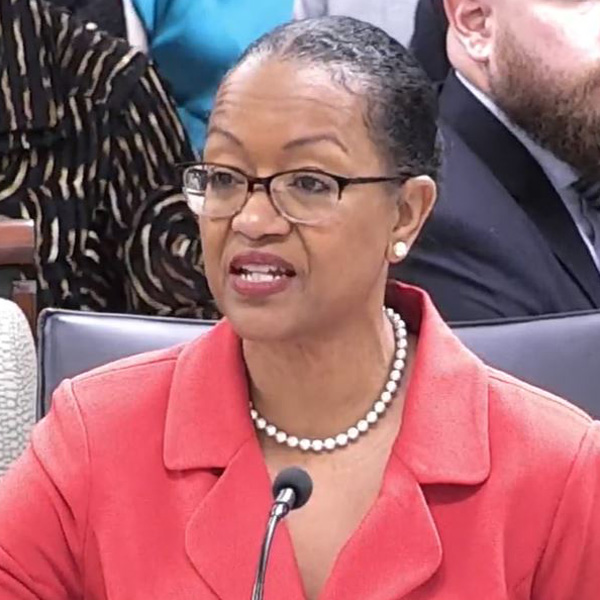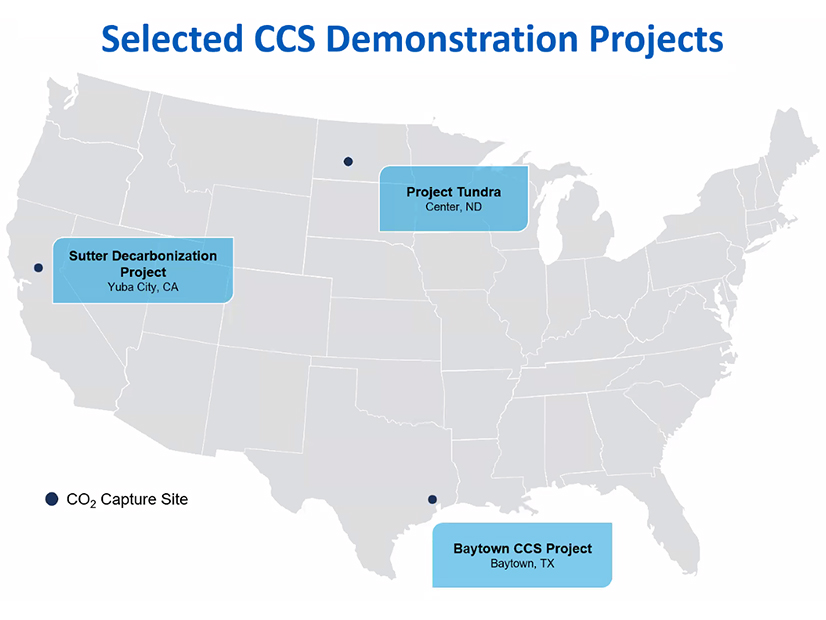ISO-NE kicked off work to determine an acceptable level of energy shortfall risk for New England at the NEPOOL Reliability Committee’s meeting Dec. 18.
The project is an offshoot from ISO-NE’s Operational Impact of Extreme Weather Events study, a collaboration with the Electric Power Research Institute to use historical extreme weather scenarios and the expected future resource mix to quantify energy shortfall risks for 2027 and 2032. (See ISO-NE Study Highlights the Importance of OSW, Nuclear, Stored Fuel.)
The study also led to the development of the Probabilistic Energy Adequacy Tool (PEAT), which the RTO plans to use in future resource adequacy studies. The Regional Energy Shortfall Threshold (REST) would apply to the risk quantified in PEAT studies.
“Establishment of the REST is intended to define the level of energy shortfall risk beyond which a set of additional, future solutions may be required,” said Stephen George, ISO-NE director of operational performance, training and integration.
While the first phase of the project is not intended to outline solutions for when shortfall risks are deemed too high, ISO-NE is planning to pivot to solutions once the REST is established.
“Possible solutions to reducing energy shortfall risk to within REST tolerances could range from market designs, to infrastructure investments, to dynamic retail pricing and responsiveness by end-use consumers,” George said.
He added that ISO-NE will also use the project to consider the frequency and timescale of PEAT studies, and whether they should be conducted on an annual, seasonal or in-season basis. He noted that the PEAT framework could be used to better understand both long-term and short-term resource adequacy risks.
ISO-NE is planning to collaborate with the states and stakeholders to establish the risk threshold, George said. The RTO intends to present an initial proposal in May, with some opportunity for stakeholder input prior to the proposal.
“ISO envisions a multimonth process spanning several RC meetings to allow for proposals, feedback, counterproposals and finalization of the REST toward the end of 2024,” George said.
Resource Adequacy Assessments
ISO-NE Technical Manager Fei Zeng presented to the RC proposed changes to the Resource Adequacy Assessment (RAA) modeling as part of the ongoing resource capacity accreditation (RCA) project.
The changes would affect the capacity values of different resource types in the Forward Capacity Market and are intended to more accurately capture resources’ reliability attributes.
“RAA is used to establish capacity requirements and demand curves and, under RCA, resource accreditation,” Zeng said. “Improvements to the RAA will better identify when loss-of-load events occur and their duration and will improve how individual resource performance is reflected during these events.”
Zeng said the main motivations for the RAA changes are to more accurately model system conditions; improve the assessment of resource performance and interactions between resources; increase the modeling consistency between resource types; and “better reflect the correlation between resources’ performance and system loading conditions and weather.”
Capacity Accreditation of Seasonal Tie Benefits
Zeng also presented changes to the evaluation of tie benefits in the RCA project, aimed at better capturing seasonal differences in values.
Tie benefits quantify the reliability contributions of grid connections between New England and neighboring regions. While current values are based on summer peak load conditions, the RCA project requires a more accurate assessment of winter tie benefit values, Zeng said.
Zeng said the tie benefits provided by New York are similar during winter and summer because the state has a similar load profile to New England’s. He noted that the benefits “are mainly the result of resource random outages and diversity.”
Because Quebec and the Maritime Provinces are winter-peaking systems, the regions’ tie benefits to New England are likely lower in the winter than in the summer, when the regions have more surplus capacity available, Zeng said.
For the RCA process, which is not intended to change the underlying tie benefit calculation methodology, ISO-NE is planning on using an approximation approach to quantifying winter tie benefits. This approach would approximate the winter tie benefits from New York, Quebec and the Maritimes based on the simulated summer tie benefits from New York.
Based on this approach, the winter tie benefits from Quebec and New York would be equal to the latter’s simulated summer tie benefits, while the Maritimes’ winter tie benefits would be set at half of this value.

